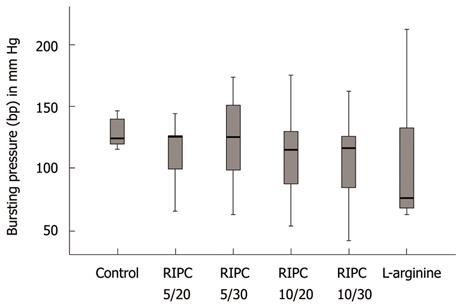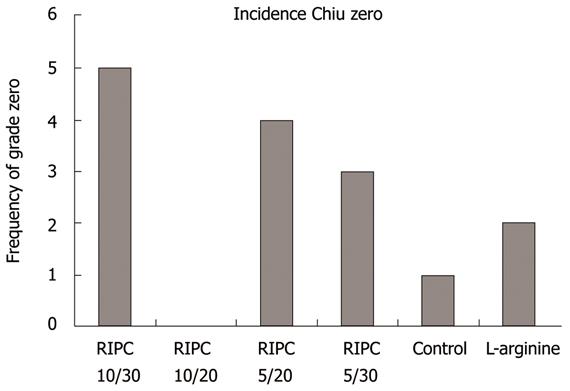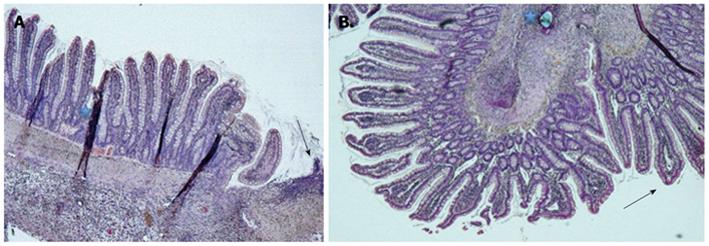Copyright
©2011 Baishideng Publishing Group Co.
World J Gastroenterol. Mar 14, 2011; 17(10): 1308-1316
Published online Mar 14, 2011. doi: 10.3748/wjg.v17.i10.1308
Published online Mar 14, 2011. doi: 10.3748/wjg.v17.i10.1308
Figure 1 Bursting pressure after different remote ischemic preconditioning settings and after arginine application expressed as box plot.
There was no significant overall difference between the groups (P > 0.05). RIPC: Remote ischemic preconditioning.
Figure 2 The histological mucosal damage score by Chiu[23] showed significantly more low-grade alterations in the remote ischemic preconditioning groups (Remote ischemic preconditioning, 27% vs control, 10%).
RIPC: Remote ischemic preconditioning.
Figure 3 Histological view.
A: Chiu grade 0 with intact epithelium and a few villi along one side of the anastomosis (HE staining; magnification 5 ×), Region of the anastomosis (arrow) and staining artefacts (*); B: Chiu grade 2 with a pronounced subepithelial space in the villi next to the inverted anastomosis (arrow) and a suture hole (*) (HE staining; magnification 5 ×).
- Citation: Holzner PA, Kulemann B, Kuesters S, Timme S, Hoeppner J, Hopt UT, Marjanovic G. Impact of remote ischemic preconditioning on wound healing in small bowel anastomoses. World J Gastroenterol 2011; 17(10): 1308-1316
- URL: https://www.wjgnet.com/1007-9327/full/v17/i10/1308.htm
- DOI: https://dx.doi.org/10.3748/wjg.v17.i10.1308















